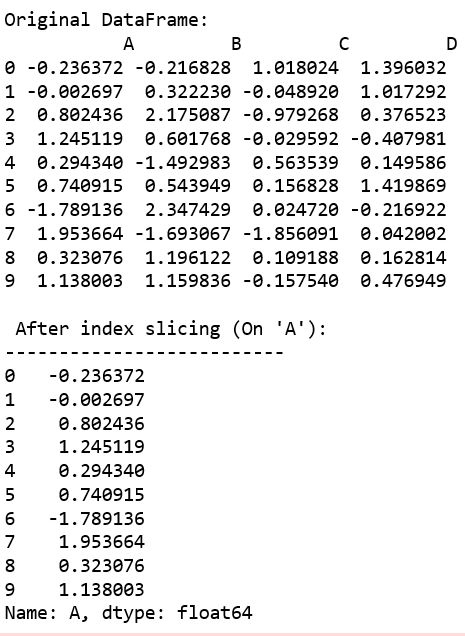Python | Pandas DataFrame.ix[ ] (original) (raw)
Last Updated : 26 Jun, 2025
Python's Pandas library is a powerful tool for data analysis, it provides **DataFrame.ix[] method to select a subset of data using both label-based and integer-based indexing.
**Important Note: DataFrame.ix[] method **has been deprecated since Pandas version **0.20.0 and is no longer recommended for use in newer versions. Instead, use **loc[] for **label-based indexing and **iloc[] for integer-based indexing.
Syntax of DataFrame.ix[]
DataFrame.ix[ ]
**Parameters:
- **Index Position: Integer or list of integers specifying row positions.
- **Index Label: String or list of strings specifying row labels.
**Returns: A DataFrame or Series, depending on the parameters.
**Code #1:
Python3 1== `
importing pandas package
import pandas as geek
making data frame from csv file
data = geek.read_csv("https://media.geeksforgeeks.org/wp-content/uploads/nba.csv")
Integer slicing
print("Slicing only rows(till index 4):") x1 = data.ix[:4, ] print(x1, "\n")
print("Slicing rows and columns(rows=4, col 1-4, excluding 4):") x2 = data.ix[:4, 1:4] print(x2)
`
**Output :

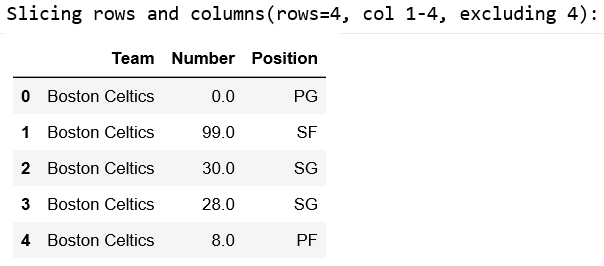
**Code #2:
Python3 1== `
importing pandas package
import pandas as geek
making data frame from csv file
data = geek.read_csv("nba.csv")
Index slicing on Height column
print("After index slicing:") x1 = data.ix[10:20, 'Height'] print(x1, "\n")
Index slicing on Salary column
x2 = data.ix[10:20, 'Salary'] print(x2)
`
**Output:
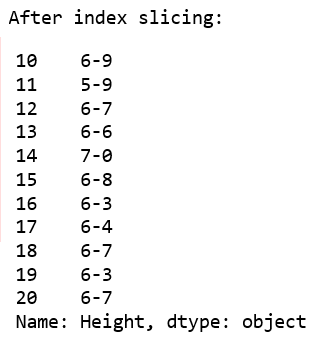
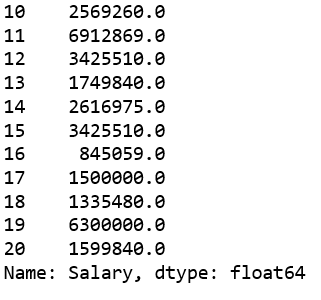
**Code #3:
Python `
importing pandas and numpy
import pandas as pd import numpy as np
df = pd.DataFrame(np.random.randn(10, 4), columns = ['A', 'B', 'C', 'D'])
print("Original DataFrame: \n" , df)
Integer slicing
print("\n Slicing only rows:") print("--------------------------") x1 = df.ix[:4, ] print(x1)
print("\n Slicing rows and columns:") print("----------------------------") x2 = df.ix[:4, 1:3] print(x2)
`
**Output :
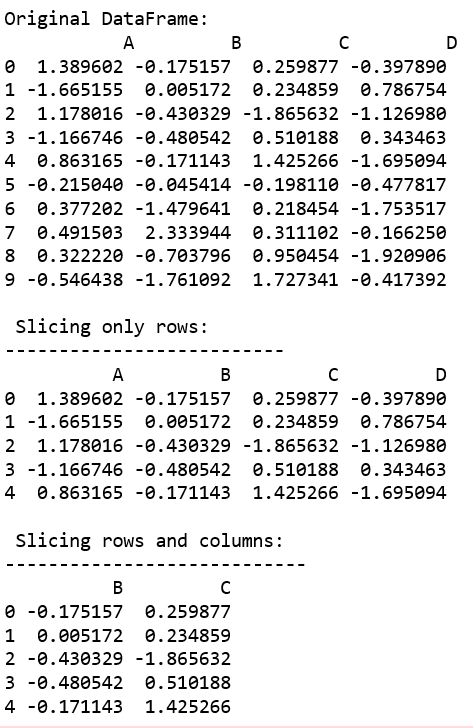
**Code #4:
Python `
importing pandas and numpy
import pandas as pd import numpy as np
df = pd.DataFrame(np.random.randn(10, 4), columns = ['A', 'B', 'C', 'D'])
print("Original DataFrame: \n" , df)
Integer slicing (printing all the rows of column 'A')
print("\n After index slicing (On 'A'):") print("--------------------------") x = df.ix[:, 'A']
print(x)
`
**Output :
